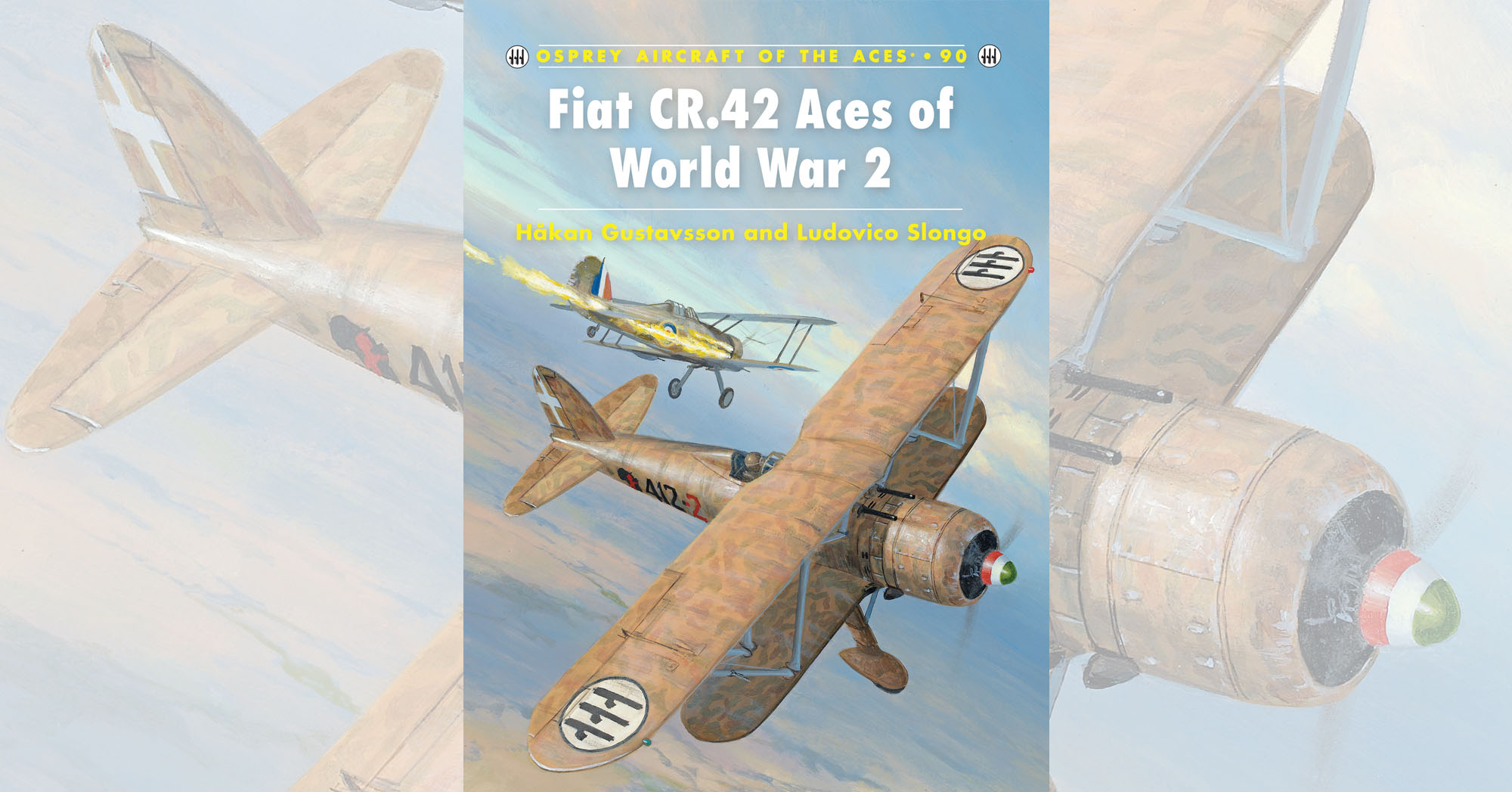Fiat CR.42 Aces of World War 2
by Hakan Gustavsson and Ludovico Slongo, Osprey Publishing, Oxford, England, 2009, $22.95.
When contests are held for the most beautiful fighter of World War II, there are many votes for the Supermarine Spitfire, FockeWulf Fw-190, Messerschmitt Me-262 and others. But if the contest was narrowed down to WWII’s most beautiful biplane fighter, the Fiat CR.42 would win hands down.
Italy’s air force and aviation industry have generally been given short shrift by historians, perhaps because of a distaste for bombastic dictator Benito Mussolini or because, in general, the Regia Aeronautica did not do very well in combat. Notwithstanding all that, the CR.42 Falco has been singled out for generous praise through the years, in part for its aesthetics and in part for how well it performed in spite of its obsolescence. The skill and gallantry of Italian pilots, who loved the CR.42 for its aerobatic qualities, did much to preserve its popularity.
The authors emphasize those distinctions throughout. For example, one caption, on P. 19, manages to encapsulate the flair of an Italian CR.42 pilot battling a Gloster Gladiator, illuminating the encounter against the realities of desert combat and also celebrating the Falco’s mystique. That page alone is worth the price of the book.
The CR.42 entered service with the Regia Aeronautica in 1939, and was also exported to Belgium, Germany, Hungary and Sweden. Even after Italy’s surrender in 1943, the Falco continued fighting for both Germany and the Allies. The CR.42 produced more than 50 aces (not all of whom flew it exclusively). The top Falco ace, Mario Visintini, scored his 16 victories over Ethiopia.
Excellent writing, comprehensive subject coverage, wonderful photos and great color profiles make Fiat CR.42 Aces of World War 2 worthy of a spot in your library.
Originally published in the September 2011 issue of Aviation History. To subscribe, click here.





